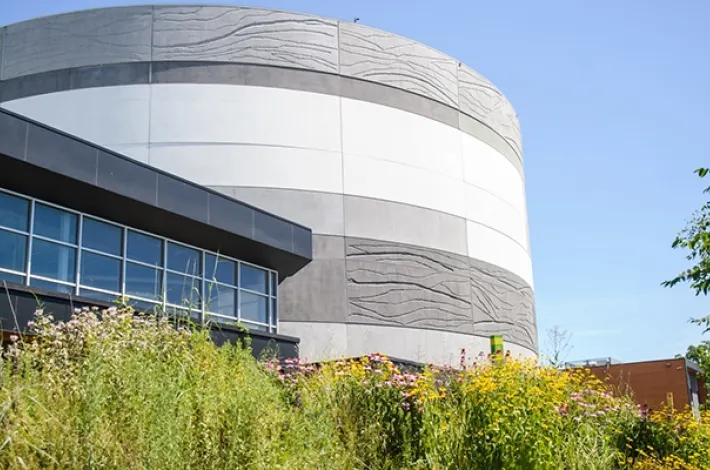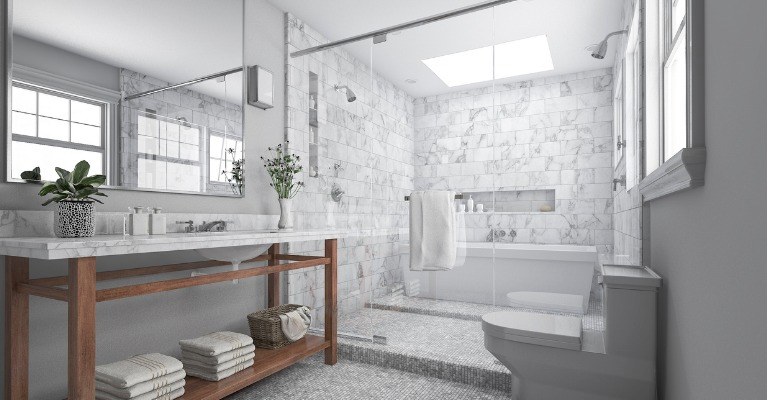
Ecohealth in everyday life, or how to improve human health while protecting the environment

In collaboration with Réseau des femmes en environnement
Human activity has caused significant changes to the environment. These changes, in turn, have led to the emergence of terms such as “climate change,” “ecological imbalance” and, since the end of the 20th century, “environmental health.”
Environmental health consists of understanding and bringing to light health problems related to pollution or the deterioration of the environment. This term is increasingly present in our lives, and protecting our environment and preserving our own health and well-being is now a major challenge.
Ecohealth and social justice
We now know that the health of humans and the health of our ecosystems are closely connected. More than ever before, we must take a sustainable approach in order to achieve both human and animal health and environmental preservation. This new approach is called “ecohealth.”
One of the first steps in this direction is to modify our lifestyles by behaving and consuming differently. To get to that point, we have to adopt new habits and behaviours and develop other reflexes.
For some people, however, such changes are easier to make than they are for others. Many eco‑friendly consumption alternatives are perceived as being more expensive and thus not very accessible to low-income households.
The Réseau des femmes en environnement therefore wants to support environmental and social justice by raising public awareness and equipping people to incorporate environmental responsibility and preservation into their everyday lives and practices.
Ecohealth in action
In concrete terms, this initiative includes conducting a household environmental quality assessment using sample homes, and recommending solutions to change or improve habits as needed. As a complement to the assessment, training is provided to support these changes.
Old habits die hard. One example of a long-standing misconception is that you should not open your windows during the winter. The truth is that, yes, you have to air out your home every day, even in winter! The air inside is more polluted than the outdoor air, whether you live in the city or the country.
In fact, confined spaces and those with little to no ventilation have a higher concentration of atmospheric pollutants, allergens, fumes from household products and those infamous VOCs (volatile organic compounds) that are present in our paint and furniture. When you do not open your windows, you are also at a greater risk of getting sick, because all of things can irritate the upper respiratory tract.
Afraid of catching a cold? In winter, the ideal humidity of a home is around 30%, a level that stops viruses from spreading. By properly airing out your home, you will not need a humidifier and will chase away those viruses and germs.
Afraid of causing the temperature to drop? Lowering the heat 5 to 10 minutes before opening the window, closing the door of the room being aired out and turning the heat back up 10 minutes after closing the window are all easy ways to air out your home, maintain a good humidity level and live in a healthier environment without overusing the heating system.
Making a habit of airing out your home in all seasons is a simple, free and effective action you can take for a healthier environment.
Of course, using less toxic products is also advisable. To clean your home, two easily accessible, effective, non-polluting and affordable products could suffice: white vinegar and baking soda. The money—and sick days—you’ll save can go toward investing in a more varied, local and nutritious diet, or to better managing your energy use and therefore your spending!
A global and sustainable approach
This two-year project by the Réseau des femmes en environnement is based on concrete and innovative actions that promote sustainable development, community involvement and the ethics of dialogue. It was launched in the Hochelaga-Maisonneuve neighbourhood given the socioeconomic conditions and resources available in the area.
At the end of the project and depending on the outcome, the Réseau plans to bring it to other areas and hopes to keep it going in the long term in order to improve the well-being of the population by bringing about social, environmental and economic benefits.
You may also like...





